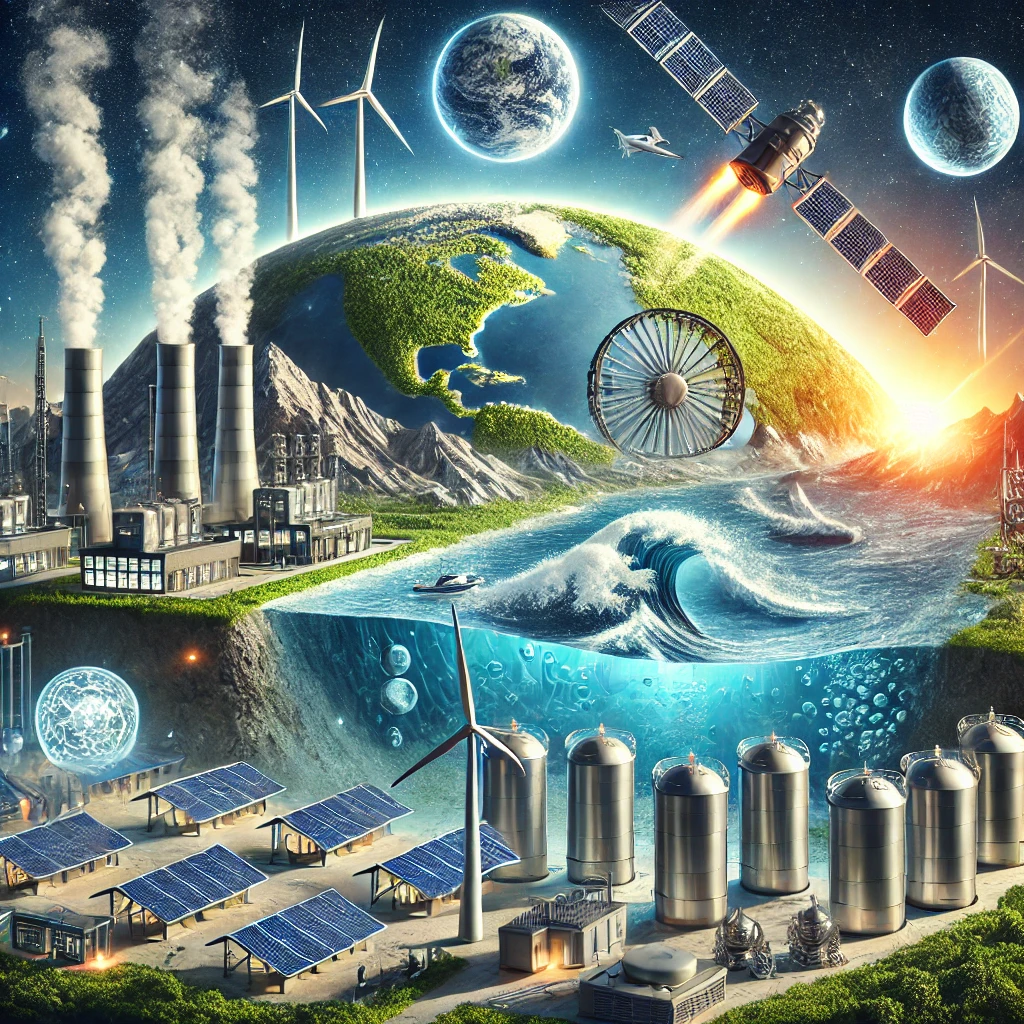
Introduction
The world is undergoing transformation and the energy industry is not left behind. The transformation has become visible with significant investments in oil and gas, renewables, and energy storage. However, beyond the well-known energy sources, there are underexplored opportunities that could reshape the future of energy.
From deep-earth geothermal heat to space-based solar power, these underdeveloped energy sources face financial, technological, and regulatory challenges. However, as global energy demand rises and the push for sustainability grows, these least explored areas in the energy sector may soon take center stage.
Let’s take a deeper look into these untapped energy frontiers, their challenges, opportunities, and potential impact.
1. Geothermal Energy – The Unlimited Power Beneath Our Feet
Geothermal energy harnesses heat from the Earth’s core to produce electricity and provide direct heating. Unlike solar and wind, geothermal energy is not weather-dependent, making it a highly reliable renewable energy source.
Why It’s Underexplored
- High Upfront Costs – Drilling deep into the Earth requires significant investment before confirming a viable geothermal reservoir.
- Geographical Limitations – Traditional geothermal energy is only feasible in areas with high volcanic or tectonic activity.
- Limited Awareness & Policy Support – Compared to wind and solar, geothermal receives less funding and fewer incentives.
Why It Matters
- Provides 24/7 renewable energy (unlike wind and solar, which are intermittent).
- Minimal land use compared to large-scale solar and wind farms.
- New technologies like Enhanced Geothermal Systems (EGS) can expand geothermal to non-volcanic regions, unlocking more potential.
Future Potential
- If developed at scale, geothermal energy could provide up to 10% of global electricity needs.
- Countries with strong geothermal resources (Iceland, the Philippines, and the U.S.) could export geothermal-based hydrogen as a clean fuel alternative.
2. Wave & Tidal Energy – The Power of the Ocean
Wave and tidal energy harness the motion of the ocean to generate power. Unlike wind and solar, ocean energy is predictable and consistent due to the regular movement of tides and waves.
Why It’s Underexplored
- Harsh Marine Environments – Corrosion, storms, and marine growth make maintenance difficult.
- High Infrastructure Costs – Subsea cables and underwater turbines require large capital investments.
- Regulatory & Environmental Concerns – Ocean-based projects face strict approvals due to their impact on marine life.
Why It Matters
- The ocean covers a large percentage of the planet, yet its energy remains largely untapped.
- Unlike solar and wind, waves and tides are predictable, making them an excellent base-load energy source.
- Could be combined with offshore wind farms to create hybrid renewable energy projects.
Future Potential
- The global wave and tidal energy market has the potential to grow significantly in the coming years with the right investments.
- Countries with strong coastal tides (Canada, the UK, Australia) are leading early adoption.
3. Space-Based Solar Power – The Ultimate Renewable Energy Source
Space-based solar power (SBSP) involves placing large solar farms in orbit to collect uninterrupted sunlight and beam the energy back to Earth using microwave transmission.
Why It’s Underexplored
- Extreme Costs – Launching solar panels into space is expensive, requiring advanced satellite technology.
- Wireless Energy Transmission Challenges – Safely transmitting energy to Earth without interference is still being developed.
- Limited Government & Private Funding – Most renewable energy investments focus on land-based solar and wind.
Why It Matters
- No weather or nighttime disruptions—solar panels in space could generate constant energy.
- Could provide power to remote and disaster-prone areas without relying on traditional grids.
- Reduces the need for land-based solar farms, freeing up space for urban and agricultural use.
Future Potential
- Countries like China, Japan, and the U.S. are already working on SBSP prototypes.
- Could become a global power source for energy-sharing between nations.
4. Hydrogen Microgrids – Decentralized Power for the Future
Hydrogen microgrids use hydrogen fuel cells to create independent energy systems that store and distribute energy locally.
Why It’s Underexplored
- Expensive Hydrogen Production – Green hydrogen production requires significant electricity input.
- Infrastructure Gaps – Hydrogen pipelines, storage, and refueling stations are still underdeveloped.
- Safety Concerns – Hydrogen is highly flammable, requiring strict safety measures.
Why It Matters
- Provides off-grid energy for rural communities, islands, and industrial sites.
- Can store excess renewable energy from solar and wind for later use.
- Hydrogen-powered microgrids could replace diesel generators, cutting emissions.
Future Potential
- Governments worldwide are investing in hydrogen strategies, making this a key energy transition solution.
- The hydrogen market is expected to experience substantial growth in the coming decades.
5. Waste-to-Energy (WTE) Solutions – Power from Trash
Waste-to-energy technology converts municipal solid waste into electricity, heat, or biofuels, reducing landfill waste while generating power.
Why It’s Underexplored
- Public Opposition – Concerns over air pollution and waste incineration.
- High Processing Costs – Advanced waste-to-energy plants require large investments.
- Limited Government Incentives – Wind and solar get more funding than WTE projects.
Why It Matters
- Reduces landfill waste while generating power.
- Can convert waste into biogas, biofuels, or synthetic natural gas.
- More sustainable than traditional landfill disposal.
Future Potential
- The global waste-to-energy market is expected to see significant growth in the coming years.
- Countries like Sweden and Japan are leading in WTE adoption.
Conclusion: The Future
The world is shifting toward cleaner, smarter, and more efficient energy solutions. However, some of the most promising energy sources remain underfunded and underdeveloped due to technical, financial, and regulatory barriers.
With global energy demand rising and climate concerns pushing for change, these least explored areas could soon become the next big breakthroughs. Geothermal, wave energy, space-based solar, hydrogen microgrids, and waste-to-energy all have the potential to redefine how we generate and use energy.






0 responses on "LEAST EXPLORED AREAS IN THE ENERGY SECTOR: THE FUTURE"